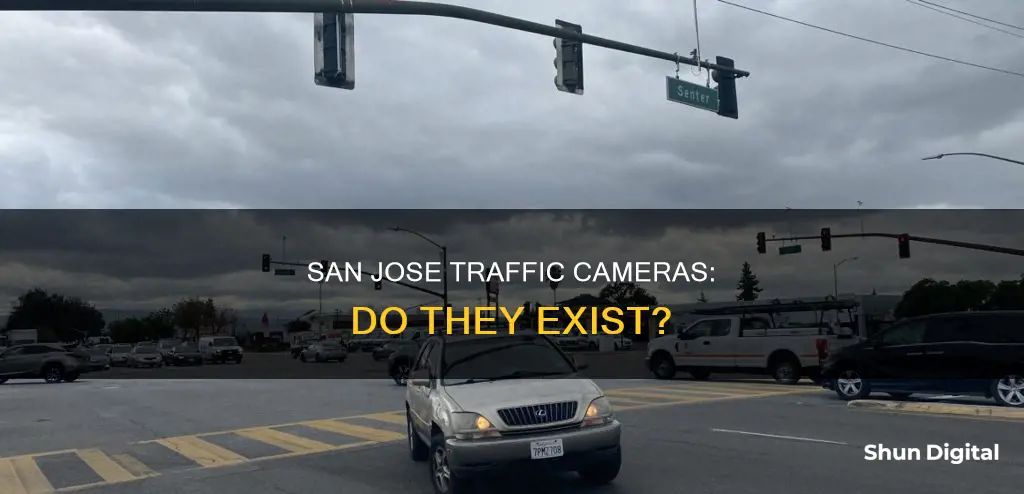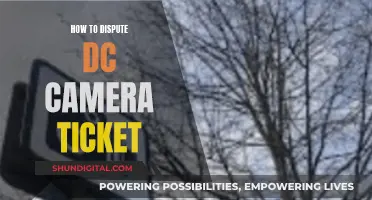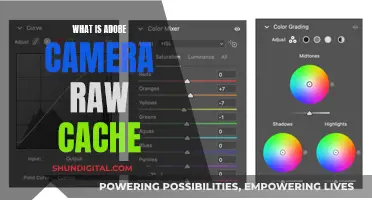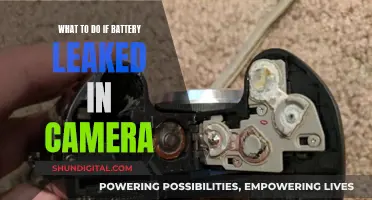
San Jose, California, is set to introduce speed safety cameras to reduce speeding and traffic fatalities. The city has been allocated 33 camera systems, which will be placed in school zones, safety corridors, and areas with a history of street racing. While some sources suggest that the city does not have red light cameras, others indicate their presence.
| Characteristics | Values |
|---|---|
| Red light cameras | No |
| Traffic cameras | Yes |
| Traffic camera purpose | Traffic monitoring, vehicle detection, and speeding enforcement |
| Number of cameras | 33 |
| Camera locations | School zones, safety corridors, and areas with a history of street racing |
| Camera footage retention | 5 days without a violation, 60 days with a violation |
| Camera data sharing | Prohibited unless required by law or subpoena |
| Camera data privacy | No facial recognition, only still photos of license plates |
What You'll Learn

San Jose's traffic cameras are for monitoring, not fines
San Jose, California, has traffic cameras, but they are for monitoring traffic flow and vehicle detection to change the lights, not for catching red light runners or issuing fines.
Assembly Bill 645, passed in October 2023, allows San Jose and five other California cities to test the use of automated speed enforcement, or speed safety cameras. San Jose is eligible for 33 camera systems, but budget constraints may force the city to reduce this number. The city does not expect to begin its speed safety camera program until the 2024-2025 fiscal year at the earliest.
The speed safety camera program is designed to address the city's increasing traffic fatalities. In 2022, 65 people died on San Jose's streets, the highest number in the city's modern history. Between 2018 and 2022, 33% of traffic fatalities in the city involved speeding.
The speed safety cameras will be placed in state-defined safety corridors, school zones, and areas with a history of street racing or sideshows. The law requires that the cameras are distributed across neighbourhoods of all income levels and not clustered in one or a few areas.
While the cameras will only take still photos of license plates and cannot use facial recognition technology, some groups, including the American Civil Liberties Union, have expressed privacy concerns over how the data will be used.
Focusing Your Camera: A Challenging Task?
You may want to see also

San Jose's pilot for speed cameras
San Jose is set to introduce speed cameras to reduce speeding and improve safety on its roads. Assembly Bill 645, which was signed into law by Governor Gavin Newsom in October 2023, authorises a six-city pilot program for speed cameras in California. San Jose is one of the cities included in this program and is eligible to install up to 33 speed cameras.
The pilot program is a response to the increasing number of traffic fatalities in San Jose. Between 2018 and 2022, 33% of traffic fatalities in the city were linked to speeding. In 2022, there were 65 traffic-related deaths in San Jose, the highest number in the city's modern history.
The speed cameras will be placed in high-risk corridors, school zones, and areas with a history of street racing. The cameras will capture images of the rear of vehicles and their license plates, with no facial recognition technology allowed. The images will be retained for five days if no violation is detected and for 60 days if a violation occurs. The data will not be shared with any other government agency.
The fines for speeding will start at $50 for driving 11 mph over the speed limit and increase to $500 for driving 100 mph or more. The first violation will result in a warning, and there will be reduced fines or community service options for those below the federal poverty line. The money collected from the fines will be used for traffic-calming measures such as streetlights and protected bike lanes.
The speed cameras are expected to be installed by the end of 2024 or in the 2024-2025 fiscal year. The pilot program will run for five years or until the start of 2032, whichever comes first.
Surveillance in Japan: Cameras Watching the Land of Rising Sun
You may want to see also

Privacy concerns about traffic data
San Jose, California, is set to pilot traffic cameras to reduce speeding and the number of traffic collisions and deaths. The city is eligible for 33 cameras, which will be placed near schools, daycares, and other corridors where children frequent, as well as the city's most dangerous streets. While this move is supported by the city's leaders, there are privacy concerns about traffic data that need to be addressed.
The use of surveillance cameras to monitor traffic and reduce speeding has faced opposition from civil liberties groups such as the ACLU, NAACP, and the Electronic Frontier Foundation due to privacy concerns. These groups argue that the widespread use of surveillance cameras could create "a surveillance infrastructure that will generate fines on a massive scale and almost certainly disproportionately impact" individuals who are already over-surveilled and over-policed. There is a worry that this technology will be used as a tool for mass surveillance and will disproportionately affect marginalized communities.
Additionally, there are concerns about the accuracy of the technology and the potential for misidentification of offenders. The tickets generated by these cameras are sent to the vehicle owner, not necessarily the driver, which has raised questions about due process and the presumption of guilt. Furthermore, there are worries that the data collected by these cameras could be shared with other government agencies or used for purposes beyond the stated intent of reducing speeding and collisions.
To address these concerns, San Jose has implemented several privacy protections. The cameras will only use still photography, and facial recognition technology is prohibited. The photos will only include the rear of the vehicle and its license plate, and they will not be shared with any other agency unless required by law or subpoena. The data will be retained for five days if no violation is issued and for 60 days if a violation is detected. The law also requires engagement with local stakeholders, including racial equity, privacy protection, and economic justice organizations, to ensure that the cameras are distributed across neighborhoods of all income levels and not clustered in specific areas.
While these measures aim to protect privacy and ensure equitable enforcement, the effectiveness of these safeguards depends on transparent implementation and ongoing community engagement and oversight.
Lakewood Traffic Cameras: Detroit Road Surveillance
You may want to see also

Where the cameras will be placed
San Jose, California, will be installing traffic cameras to monitor speeding, thanks to Assembly Bill 645, which was passed in October 2023. The bill allows for a five-year pilot program, during which San Jose is eligible to install up to 33 camera systems. The exact locations of the cameras have not yet been decided, but the bill outlines specific parameters for their placement.
The cameras can only be placed on state-defined safety corridors, in school zones, and areas with a history of street racing or sideshows. The law also requires that the cameras are distributed across communities of all income levels and are not clustered in one or a few areas. San Jose Mayor Matt Mahan has stated that he will prioritize putting cameras near schools, daycares, or other corridors where children frequent, as well as the city's most dangerous streets.
The city will need to conduct robust community outreach and have discussions with the public about where the cameras will be installed. The cameras and supporting systems will then need to be purchased or leased with a future budget.
Fixed speed cameras are typically mounted on elevated poles on the side of the road and are easy to spot due to their bulky weatherproof enclosures and external flashes. Mobile speed cameras, on the other hand, are more challenging to notice as they are not permanently mounted and can be located on a camera tripod or inside a van.
Hiding Cameras in Your Car: Best Spots to Try
You may want to see also

The cost of the cameras
San Jose is eligible to install up to 33 cameras, but budget constraints may force the city to reduce the number. Mayor Matt Mahan has acknowledged that the program will be challenging and expensive, given the cost of leasing the cameras, the data systems required to operate them, staff training, and the creation of procedures. The city is unable to provide a cost estimate until it receives bids on the project. Mahan has stated that he hopes to allocate the necessary funds by July 2024.
The cost of leasing the cameras and the necessary data systems, as well as the cost of training staff and creating procedures, are all factors that contribute to the overall expense of the camera program. The city of San Jose is taking a thoughtful approach by conducting research, engaging with stakeholders, and seeking funding to ensure the program's success and effectiveness in improving road safety.
The National Transportation Safety Board, the Centers for Disease Control and Prevention, the Federal Highway Administration, and the California Transportation Agency have all recommended the use of speed safety cameras to enforce speed limits. Speed cameras were also authorized as an expenditure under the federal bipartisan Infrastructure Investment and Jobs Act, recognizing their potential to enhance road safety.
According to the Federal Highway Administration, speed cameras have the potential to reduce crashes on urban streets by 54%. This is supported by the experience in New York City, which has implemented more than 2,200 cameras and achieved a 73% reduction in speeding at fixed camera locations as of December 2021. Speeding in school zones was reduced by up to 63%.
The successful implementation of speed safety cameras in New York City and other cities demonstrates the potential effectiveness of such programs. The reduction in speeding and crashes not only improves road safety but also has a positive impact on the well-being of the community.
Charging Your Spy Pen Camera: How Long Does It Take?
You may want to see also
Frequently asked questions
San Jose does have traffic cameras, but they are not used for catching red light runners. They are used for monitoring traffic flow and vehicle detection to change the lights.
San Jose does not have red light cameras.
San Jose is eligible to install up to 33 speed cameras as part of a pilot program to reduce speeding. However, budget constraints may force the city to reduce the number of cameras installed.
The speed cameras will be placed in school zones, "safety corridors", and areas with a history of street racing or sideshows. The cameras will be distributed across neighborhoods of all income levels and not clustered in one or a few areas.
The installation of speed cameras in San Jose is expected to begin in the 2024-2025 fiscal year at the earliest.







